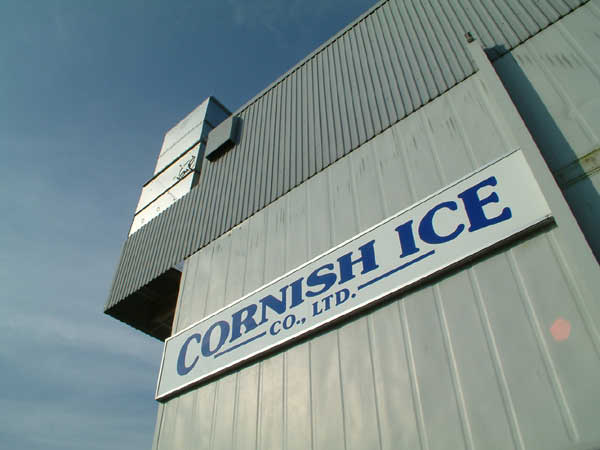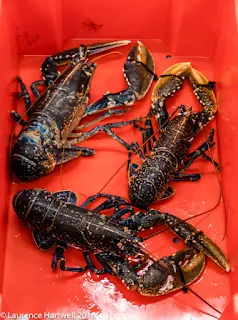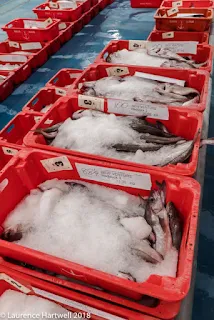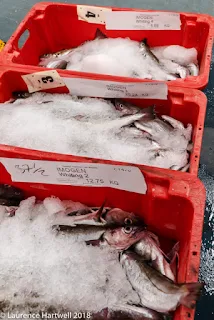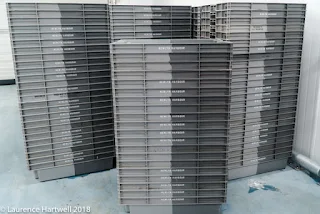
Stephen Leach aboard the Wyre Star in Milford Haven 1984
'Leachy' was a trawlerman through and through and one of the youngest skippers ever to get his full masters ticket when fishing out of Lowestoft. After many years fishing on the big trawlers of the day in the 70s and early 80s he moved to St Ives in Cornwall having invested in the Fleetwood registered 64 foot trawler, Wyre Star. The photo above shows Stephen with his son Gary in the stern of the Wyre Star after running into Miflord Haven from the Smalls in bad weather.
Stephen was one of around fifteen 50-60 foot trawlers that worked from Newlyn at the time. For many summers he fished for langoustine, often landing into Dunmore in Ireland. The Wyre Star, like many boats in Newlyn at the time was scrapped under the decommissioning scheme to reduce fishing effort across the EU.
He replaced the boat with the Wayfinder and re-registered her in St Ives as SS252. As with his previous command, Stephen and his son Gary worked the boat three or four handed depending on the time of year and continued to fish for langoustine on the Small grounds during the summer months.
In the 1980s as the local fleet expanded rapidly to take advantage of high prioces and abundant fish a group of Newlyn trawler and netter skippers decided that the harbour needed an independent iceworks to supply the ever-growing fleet of private vessels in the harbour as demand was at times outstripping local supplies. Stephen, along with fellow trawler skipper Mervyn Mountjoy was one of the founding members of the Cornish Ice Company Limited.
After retiring, he and Gary decided that 'small is beautiful'...
and a new family boat of a very different class was purchased - the catamaran, Bethshan...
which son Gary now works mainly handlining for fish like mackerel in St Ives Bay.
This section of the Fishing Boats in Newlyn Harbour 1994 video starts with Stephen and son Gary aboard the Wyre Star in 1994.



